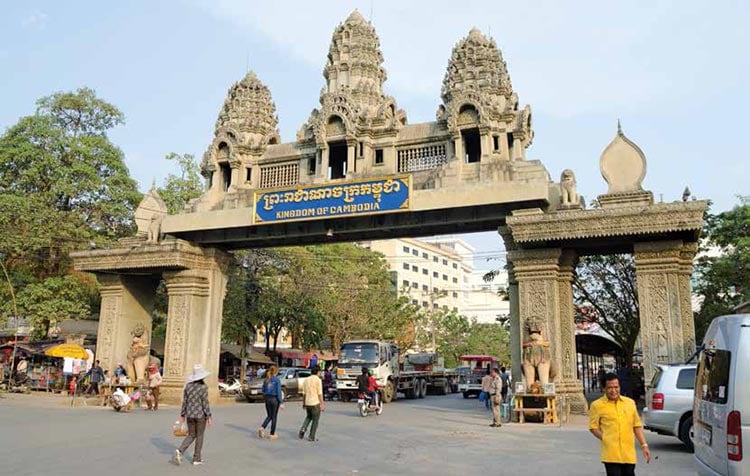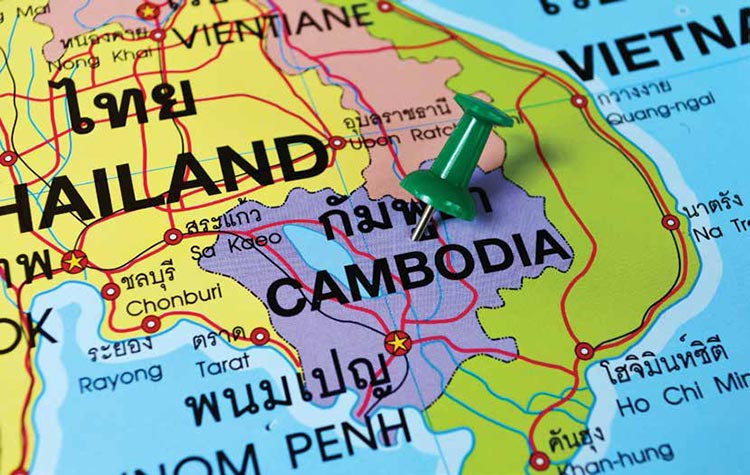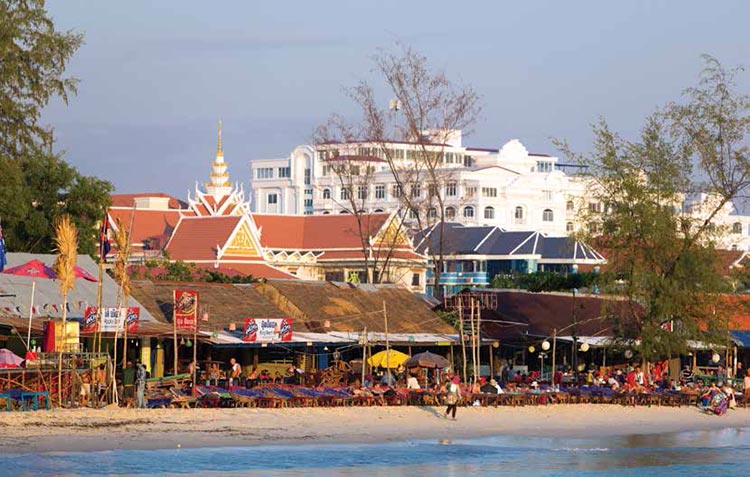Global Market Advisors’ Andrew Klebanow provides a detailed rundown of the current state of the Cambodian gaming industry.
Major casino operators have long perceived Cambodia as a tertiary gaming market – a collective mix of border casinos that catered to residents of adjacent countries seeking a convenient place to gamble. The absence of robust gaming regulations further discouraged larger operators from considering acquisitions or developments in the Kingdom. That perception is changing.
Anticipated changes in the regulatory environment coupled with dramatic growth in casino markets throughout the country has caused casino developers to take a closer look at Cambodia.

Cambodia’s first casino license was granted to NagaWorld in 1994, which at that time operated a casino boat on the Tonle Sap River in the country’s capital of Phnom Penh. Today, NagaWorld is the country’s largest integrated casino-resort. NagaWorld is comprised of two distinct properties, Naga1 and Naga2. Naga1 contains 797 rooms and suites, 1,660 slot machines and approximately 300 gaming tables. In addition, the facility offers 18 food and beverage outlets, two nightclubs, 1,072 square meters of banquet and meeting space and a spa.
In November 2017, the Company opened Naga2, a separate hotel-casino that connects to Naga1 via a newly built underground shopping arcade. Naga2 provides a more upscale gaming, lodging and entertainment experience. It consists of a five-star hotel with 900 hotel rooms, multiple gaming rooms with space for up to 2,500 slot machines and 300 gaming tables, private gaming salons and additional gaming rooms for junket providers. In addition, Naga2 offers a 2,200-seat theater, four restaurants, an 11-station food pavilion, two nightlife venues and multiple entertainment stages.

The successful impact of Naga2 on NagaWorld’s overall performance was dramatic. In the 12-month period ending 30 June, the two properties collectively generated over US$1.2 billion in gaming revenue. For the trailing 12 months ending in June of 2018, gross gaming revenue increased by 105% from the prior year period. NagaWorld’s impact on economic growth was equally dramatic. It now employs over 8,600 people and the property generates over 20% of the country’s tourism GDP.
POIPET
Poipet sits across from Aranya Prathet, a border town in northeastern Thailand that serves as the primary overland crossing between those two countries. The casinos target the 10 million residents of Bangkok.


The casino district is currently comprised of 15 properties, with approximately 800 tables, 4,000 electronic gaming machines and about 2,500 guest rooms. These properties range in quality from half stars to 3 stars.
The casinos’ location relative to Thailand and Cambodia’s immigration checkpoints is unique. Patrons leave Thailand and enter the Poipet casino district without actually going through Cambodia Immigration. This allows Thai residents to easily cross the border and enjoy a day of gaming entertainment without enduring the ordeal of passing into and out of Cambodian Immigration. A Thai citizen returning home need only present an identification card to re-enter Thailand, minimizing the border crossing process to just a few minutes. However, westerners visiting the casino district from Thailand must obtain both an inbound and outbound Cambodia visa stamp to re-enter Thailand.
Poipet is a three-and-a-half hour drive by car from central Bangkok. A four-lane divided highway recently replaced a two-lane, two way road, ostensibly to accommodate the burgeoning commercial traffic traveling to the border. In addition, a regularly scheduled bus service from Bangkok, mini buses and taxis combine to provide a reasonable mix of transportation alternatives. An old rail system that runs from Bangkok is slated to be replaced with a high-speed line that will ultimately link Bangkok with Cambodia and China.
Poipet is undergoing a transformation. New hotel towers are rising as existing casino operators re-invest in their properties in order to attract overnight visitation. What these operators have recognized is that, like other regional markets, reinvestment in high quality facilities can attract new market segments that seek entertainment experiences that go beyond a baccarat game.
BAVET
BAVET
The town of Bavet sits on the border of Vietnam, nearly halfway between Ho Chi Minh City and Phnom Penh. National Highway 1, which runs through Bavet, is a primary transportation corridor between the two cities. Roughly two hours from Ho Chi Minh City, Bavet is the closest place that residents of Ho Chi Minh City can go to gamble. Immigration policy allows Vietnamese passport holders to enter Cambodia without requiring a visa.

Ho Chi Minh City center is only 70 kilometers from Moc Bai (Vietnam’s border gate) and a regular bus service is available every 40 minutes, making transportation easy and relatively inexpensive. Its casinos’ appeal and success are based on geographic convenience to its target market, the nine million residents of the Ho Chi Minh City metropolitan area. That population is growing rapidly and is set to reach 13.9 million by 2025.
Currently, 13 casinos line either side of National Highway 1 west of the border gate, with quality generally varying from half star to 3 stars. Like Poipet, the operators in Bavet are also expanding their properties with higher quality overnight accommodations.
SIHANOUKVILLE
Sihanoukville is a deep water port and downmarket vacation destination on the Gulf of Thailand in southwest Cambodia. It is serviced by a modest sized airport, capable of accommodating A-320/737 aircraft on its single runway.


There are approximately 17 casinos currently in operation in Sihanoukville’s tourism corridor on or near Victory Beach, Independence Beach and Ocheteaul Beach, with a total of 27 casino licenses issued as of December of 2017. In 2015, the market had nine licenses. The casinos that are open today are generally small and range in quality from half star to 3½ stars.
Sihanoukville is undergoing a dramatic transformation from a backpackers’ beach town to a vacation-condominium market. Rising along the beaches are no less than a half dozen high-rise mixeduse condominium/hotel/casino projects. The scale of some of these properties is dramatically different from current commercial structures. Many of these are high-density/high-rise developments, up to 47 floors tall. These projects will target Chinese second home owners that vacation or conduct business in the city.
LIVE DEALER ONLINE
What is unique to Cambodian casinos is their collective embrace of a hybrid form of internet wagering called Live Dealer Online (LDO) gaming. In most Cambodian casinos, a separate table game pit is reserved for patrons who wish to gamble from remote locations, ostensibly in other countries. These tables are equipped with special lighting and high-resolution cameras. Prior to wagering for the first time, a customer must first visit their preferred casino, open an account and place money on deposit.
With an account now open, a visitor to a casino’s live-wagering website can look at the faces of all the dealers and select a table to play at. Visitors can also observe casino customers walking in the background, further assuring them that they are playing a live game.
Once a table is selected and a bet is made online, the dealer commences the game. Customers observe the outcome of those games on their computers or mobile devices. While the wager is made online, LDO allows customers to play against a person, not a computer, and witness in real time the outcome of each game. This type of online wagering allows gamers to overcome the trepidation and mistrust often associated with playing a computer game. It allows remote wagering with the assurance that the game is legitimate.
Junket operators have also moved into the LDO market. Operating under a casino’s license, junket operators manage LDO table game pits in their host’s casino. They in turn provide credit to online customers, thereby allowing patrons the convenience of not having to replenish their accounts when they extinguish their gaming funds.
With more robust gaming regulations, a very reasonable gaming tax rate and the government’s commitment to use gaming and tourism as tools for economic development, Cambodia’s casinos are rapidly evolving. Cambodia is rising from a tertiary gaming market to a super-regional gaming destination. Operators in other markets are advised to take notice.

One thought on “Cambodia Rising- Guide to the Kingdom’s Gambling Towns”